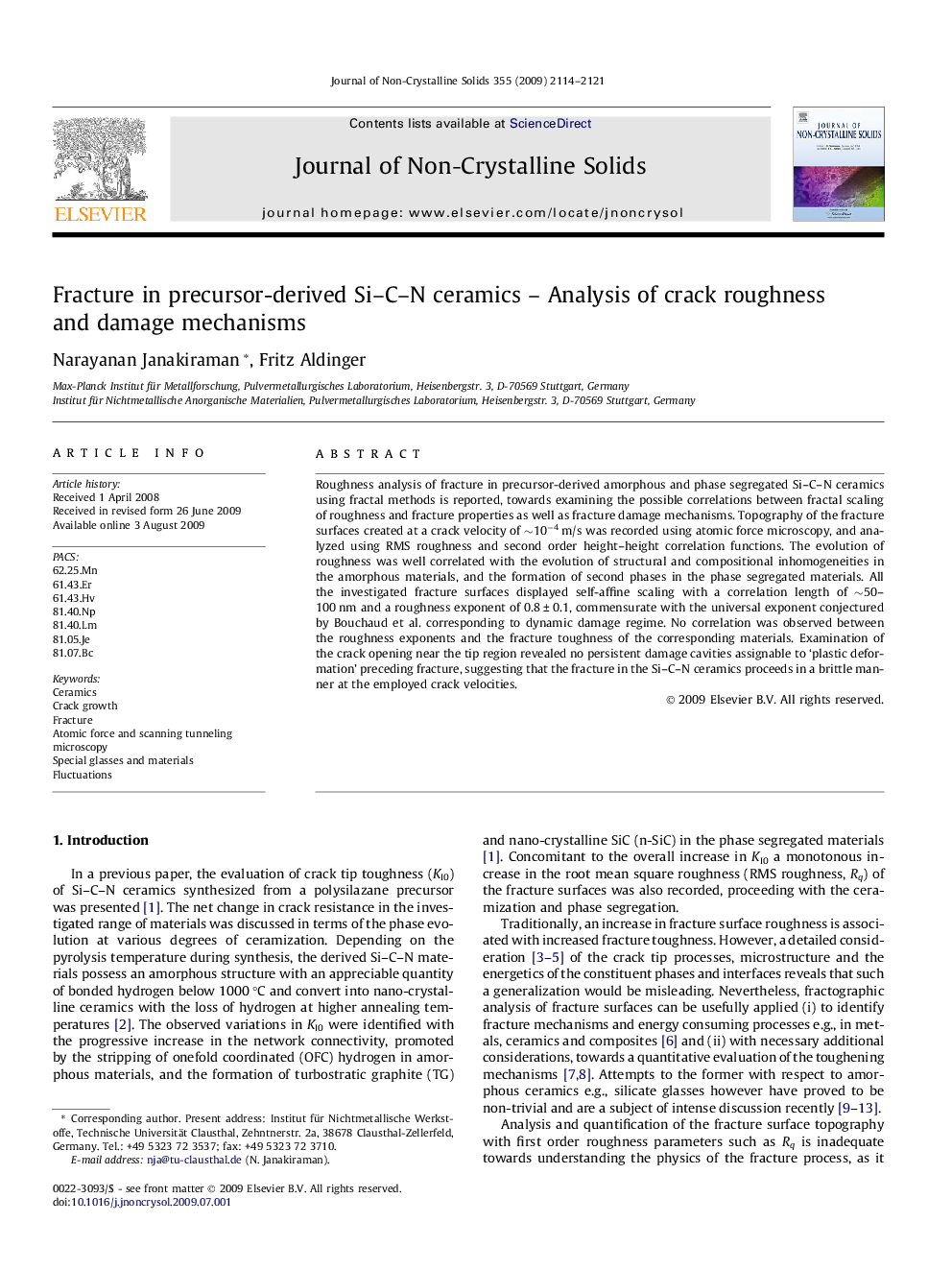| Article ID | Journal | Published Year | Pages | File Type |
|---|---|---|---|---|
| 1482238 | Journal of Non-Crystalline Solids | 2009 | 8 Pages |
Roughness analysis of fracture in precursor-derived amorphous and phase segregated Si–C–N ceramics using fractal methods is reported, towards examining the possible correlations between fractal scaling of roughness and fracture properties as well as fracture damage mechanisms. Topography of the fracture surfaces created at a crack velocity of ∼10−4 m/s was recorded using atomic force microscopy, and analyzed using RMS roughness and second order height–height correlation functions. The evolution of roughness was well correlated with the evolution of structural and compositional inhomogeneities in the amorphous materials, and the formation of second phases in the phase segregated materials. All the investigated fracture surfaces displayed self-affine scaling with a correlation length of ∼50–100 nm and a roughness exponent of 0.8 ± 0.1, commensurate with the universal exponent conjectured by Bouchaud et al. corresponding to dynamic damage regime. No correlation was observed between the roughness exponents and the fracture toughness of the corresponding materials. Examination of the crack opening near the tip region revealed no persistent damage cavities assignable to ‘plastic deformation’ preceding fracture, suggesting that the fracture in the Si–C–N ceramics proceeds in a brittle manner at the employed crack velocities.
